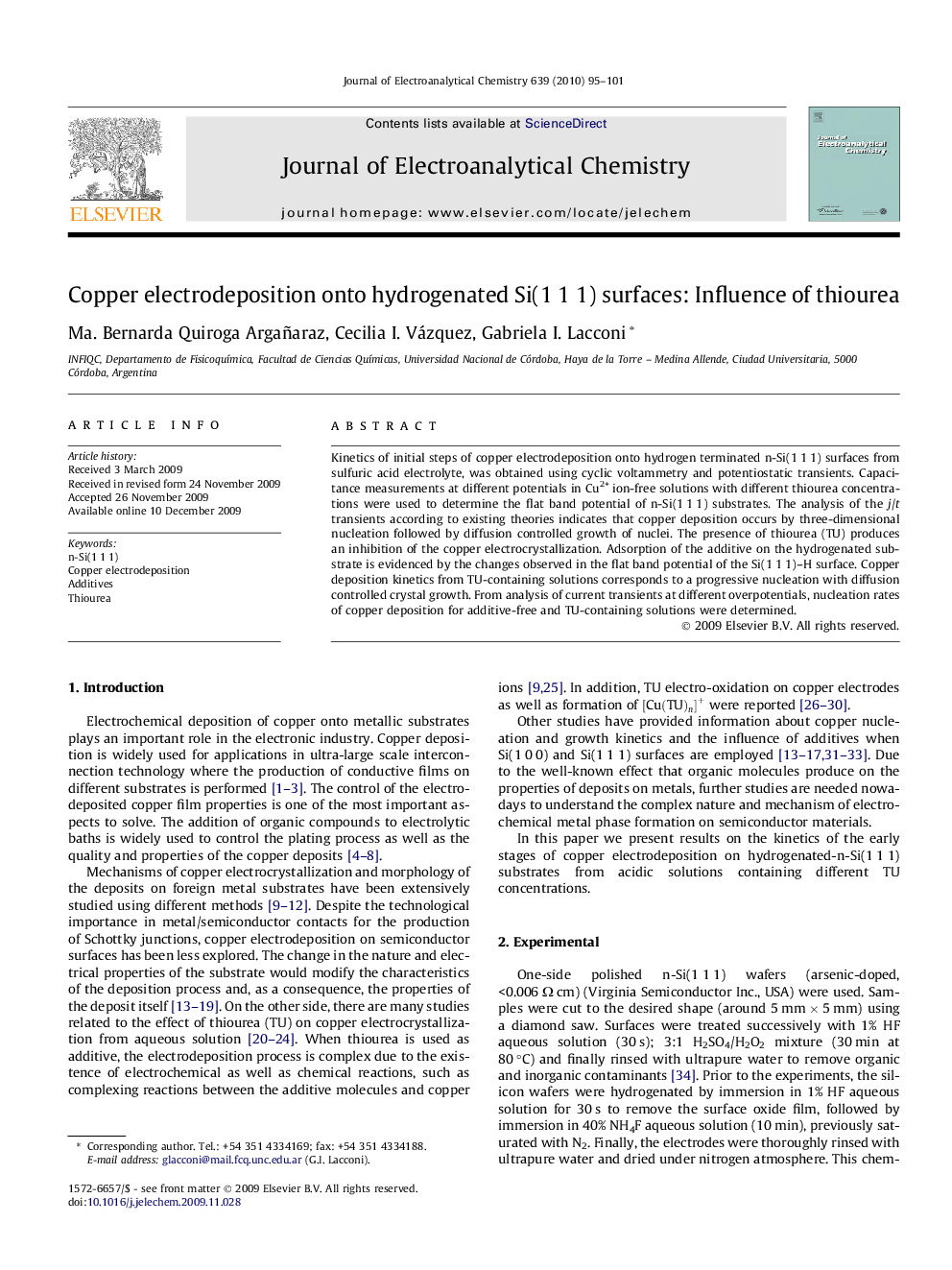| Article ID | Journal | Published Year | Pages | File Type |
|---|---|---|---|---|
| 220028 | Journal of Electroanalytical Chemistry | 2010 | 7 Pages |
Kinetics of initial steps of copper electrodeposition onto hydrogen terminated n-Si(1 1 1) surfaces from sulfuric acid electrolyte, was obtained using cyclic voltammetry and potentiostatic transients. Capacitance measurements at different potentials in Cu2+ ion-free solutions with different thiourea concentrations were used to determine the flat band potential of n-Si(1 1 1) substrates. The analysis of the j/t transients according to existing theories indicates that copper deposition occurs by three-dimensional nucleation followed by diffusion controlled growth of nuclei. The presence of thiourea (TU) produces an inhibition of the copper electrocrystallization. Adsorption of the additive on the hydrogenated substrate is evidenced by the changes observed in the flat band potential of the Si(1 1 1)–H surface. Copper deposition kinetics from TU-containing solutions corresponds to a progressive nucleation with diffusion controlled crystal growth. From analysis of current transients at different overpotentials, nucleation rates of copper deposition for additive-free and TU-containing solutions were determined.
